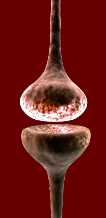1 - Cognitive Sciences and Psychology confirm the Christian Faith
1 - 3 Are the cognitive maps of our human nature only created from childhood until adolescence, or are they printable throughout our life?
One of the reasons for which the scientists were surprised by the effervescence that seizes the brain of a teenager is that the brain evolves very little during childhood. A six-year-old child brain indeed reached 95% of its adult size. The size of the brain is however not a criterion of mental capacity. If the woman generally has a cranial volume lower than the one of the man, she however has a neuronal capacity identical to that of the man. We know very well nowadays who a laptop can be hundred times more powerful than the one of desktop of yesterday, and it is a little the same thing.
Our capacities of analyzes are thus not dependant from the size of our brain, but well with the interconnection of its neurons and synapses (neuronal connections). If there exist three types of synapses, those of nature chemical which are most numerous, those of electric nature, not very frequent, and the mixed one (chemical or electric), there exists more than 200 types of neurons which do not have all the same functions. A part of them are used as conveying elements of information, others like elements engine, and others still are used in “data storage”. The nerve impulse (or action potential) that allows data transfer is a physicochemical phenomenon, and produces an electric field in the neurons. This is however not comparable to an electric current. It runs to 49 m / s (around 160 feet/s) for the lower limbs in humans, and 42m / s (around 138 feet/s) for the upper limbs.
Example of a synapse with chemical nature which is the zone of transmission of the data between two neurons. The synapses are separated by a synaptic space which allows a sensitizing of the neurons close to that which is activated, without them having obligation to react and produce a possible transfer of information.
Beyond our genetic values, particularly on the level of the frontal lobe of the neocortex, it thus creates itself a system of analytical imagery related mainly to the emotions. These data are created in connection with the search of the pleasure, in the recognition of an egocentric love limited by the fear, the anxiety, the anguish… The interconnection of our neurons and synapses, allows us an analysis of each situation of our life in connection with an already interpreted image. We call this “images”, cognitive maps.
These cognitive maps follow a rather constant diagram of analysis in the child, which made it possible to the Swiss psychologist Jean Piaget (1896-1980) to provide the foundations of genetic epistemology, on the study of the ways of thinking throughout the life. Beyond thus of the parental genetic contribution, all the social systems and educational surrounding generate these maps, in an increasingly large synaptic rigidity, which gradually accentuates the bases of value “rewards, punishment” as the subject advances in the adulthood.
Our system of neuronal interconnections have stabilization in a state considered adult around 25 year old, as shows it the studies of Doctor Geidd, but has tendency to gradually missing flexibility. It remains nevertheless that throughout our life, our short-term memory can remain creative of cognitive maps in our long-term memory. These can however have more and more difficulties to come out from the Hippocampus, manager of the memory from short to the long run towards the frontal cortex, principal stock place of the cognitive maps.
This means that, whatever our age, we are always free of our mode of analysis on the spiritual level, even if it is more difficult for us to establish the causal relationship.




